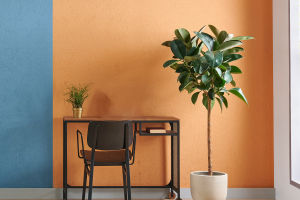Flower arranging is an art form that combines creativity, design, and a touch of nature’s beauty. Whether you’re preparing a bouquet for a special occasion or just adding some color to your living space, the right techniques can take your arrangements from ordinary to stunning.
With the right balance, texture, and a dash of creativity, you can master the art of flower arrangement and impress everyone with your floral masterpieces.
1. Choose the Right Flowers
Start with fresh blooms: The key to any beautiful arrangement is using fresh, high-quality flowers. Look for flowers with vibrant colors, firm petals, and healthy green leaves. Popular choices include roses, tulips, lilies, hydrangeas, and peonies.
Mix and match colors: To make your arrangement pop, choose a color palette that complements the setting. Opt for contrasting colors like bold reds with soft whites or go for a monochromatic scheme like various shades of pink. Your choice of color will set the tone for the arrangement.
Take Your Floral Arrangement From Amateur To Pro By Designing With These Six Elements
Video By Ellen Frost
2. Prepare Your Flowers
Trim the stems: Before arranging, cut the stems of your flowers at an angle to ensure better water absorption. A 45-degree cut prevents the stem from resting flat at the bottom of the vase and allows more water to reach the bloom.
Remove excess foliage: Strip any leaves that will be submerged in water, as these can rot and contaminate the water, shortening the lifespan of your flowers.
3. Select the Right Vase or Container
Size and shape matter: The size and shape of your vase will influence the arrangement's overall look. Taller flowers need a tall vase, while shorter blooms can fit perfectly in a low, wide vase. Ensure the vase complements the flowers rather than overpowering them.
Use floral foam: For more structured arrangements, especially in wide vases or containers, floral foam can be a great help. Soak the foam in water and insert your flowers into it to hold them securely in place.
4. Create a Foundation
Start with greenery: Begin your arrangement by adding greenery or filler flowers like ferns, eucalyptus, or baby's breath. These create a base for your arrangement and provide texture and depth.
Layer from large to small: Place the larger, focal flowers like roses or sunflowers first, then add medium-sized blooms, and finally fill in gaps with smaller, delicate flowers like daisies or carnations. This creates a balanced and aesthetically pleasing arrangement.
5. Use Height and Balance
Vary the height of flowers: A well-arranged bouquet has flowers at different heights to create visual interest. Place some flowers higher than others while keeping balance in mind, so the arrangement doesn’t look lopsided.
Work in odd numbers: Florists often use the rule of threes or fives when arranging flowers. Odd numbers create a more natural, organic look that feels less staged than even numbers.
6. Add Unique Elements
Mix textures: Pair soft, delicate flowers with spiky or textured greenery to add dimension. Combining different textures like smooth petals with rougher leaves creates an arrangement that’s interesting to both the eyes and touch.
Experiment with accessories: Add ribbons, beads, or even decorative branches to enhance the design. These small touches can give your arrangement a personalized, sophisticated flair.
7. Keep Your Flowers Fresh
Change the water regularly: To prolong the life of your arrangement, change the water every two days, cutting the stems slightly each time to keep them hydrated. Clean water helps prevent bacteria from building up.
Use flower food: Most florists provide packets of flower food with their bouquets, but you can also make your own by mixing sugar, a drop of bleach, and lemon juice into the water.
Flower arranging is more than just placing blooms in a vase — it’s an art that requires patience, creativity, and attention to detail. Dear Lykkers, by following these essential techniques, you can transform simple stems into breathtaking floral arrangements that bring joy and beauty to any space. So grab some fresh flowers, and let your creativity bloom!


